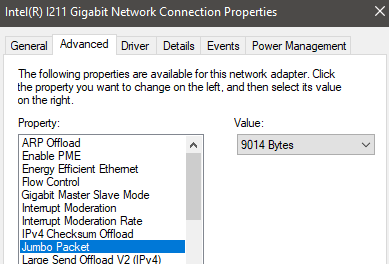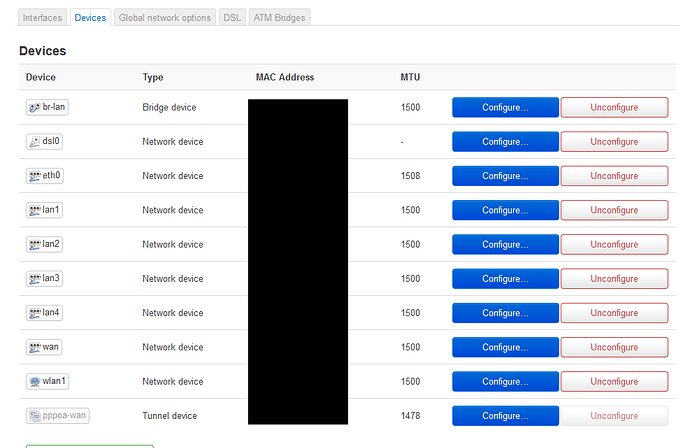Ty for the post 
One last thing... do you know why my eth0 device has 1508 MTU and the other "lan related" devices has 1500?
eth0 is the 5-port switch (I guess/think ?????), lan1 to lan4 are the first 4 ports, wan is the 5th switch port (the name is "wan" but it is NOT related to my dsl connection, "wan" is an RJ45 port on the switch dsl0 is an RJ12). br-lan is the bridge of all lanX ports.
To enable jumbo frames should I set option mtu '9014' on eth0, br-lan, lan1 to 4 and wan? I choose 9014 because on my win machine is see this:

Should I set eth0 to be 8 more (so 9022)?
Also, isn't this a really big mess? I remember (before this DSA thing, on my "old" TD-W8980) to be able to avoid any per-port definition, bridges and VLAN bs, and just set (from an high-level pov) the eth interface (the switch) to be the 192.168.1.X network and the wlan is the 192.168.2.X network... this was also clear by running ifconfig, which before DSA would return just 4 entries (pppoa, wlan, eth and lo) and now is this thing:
?????

